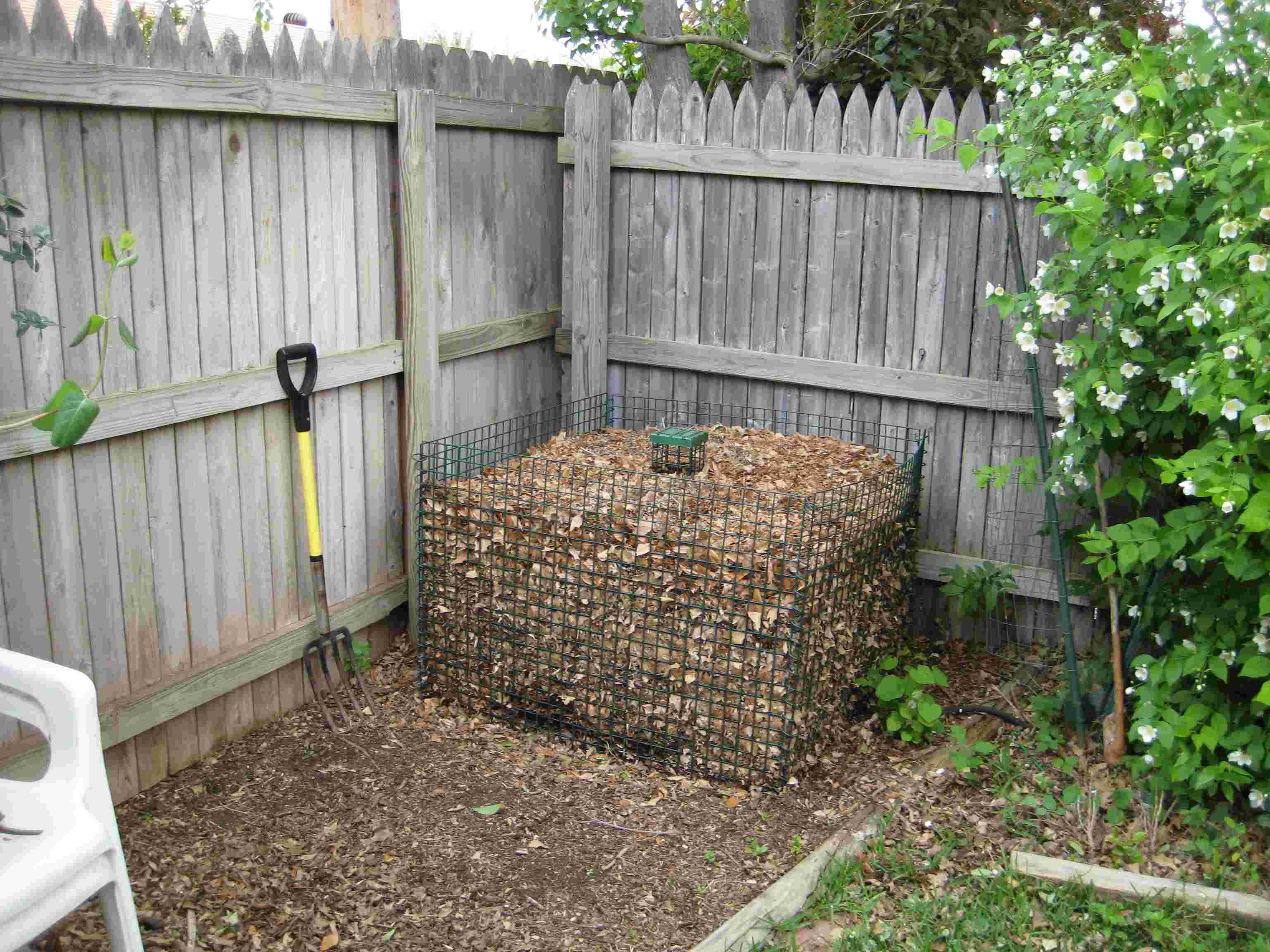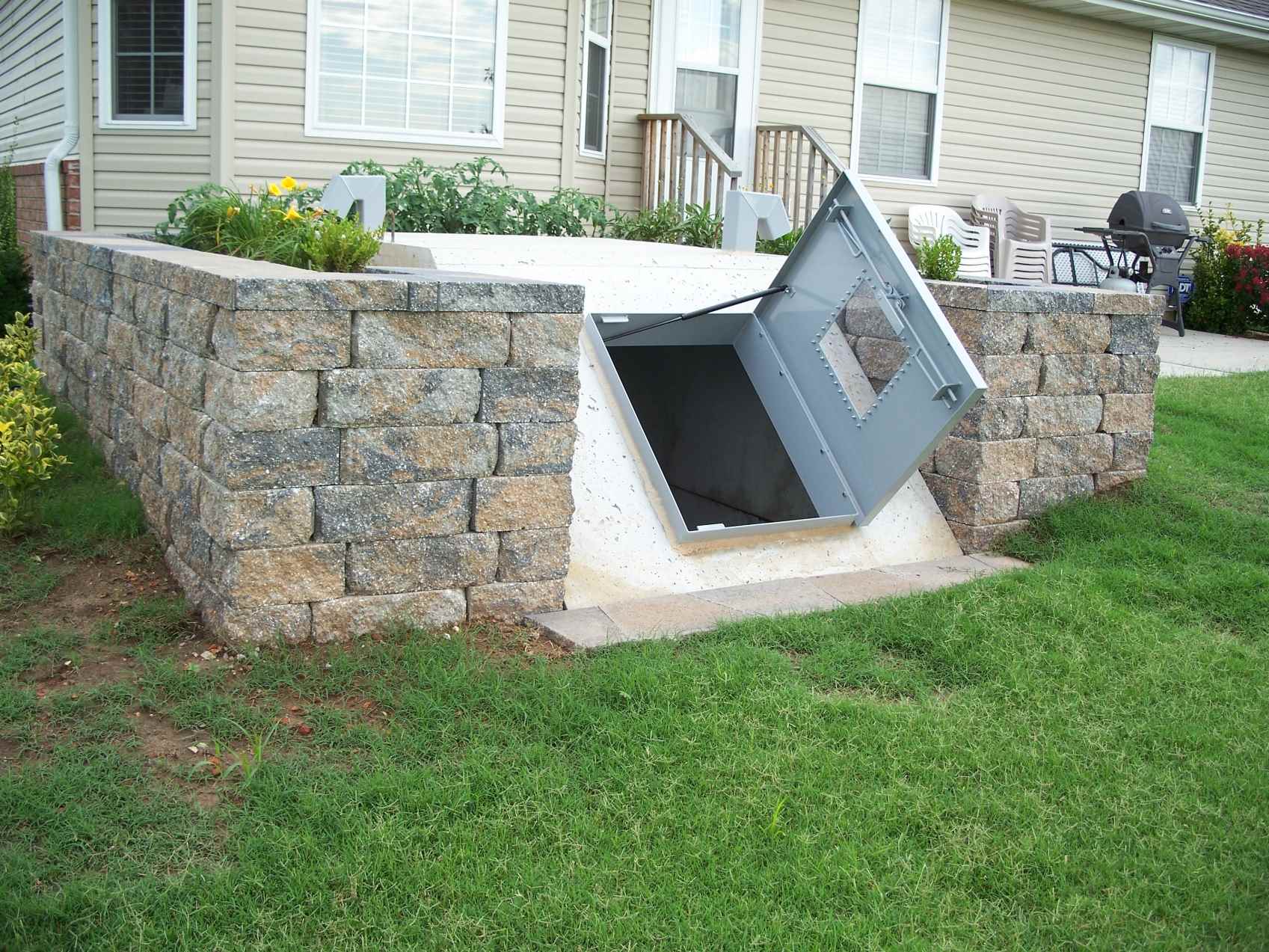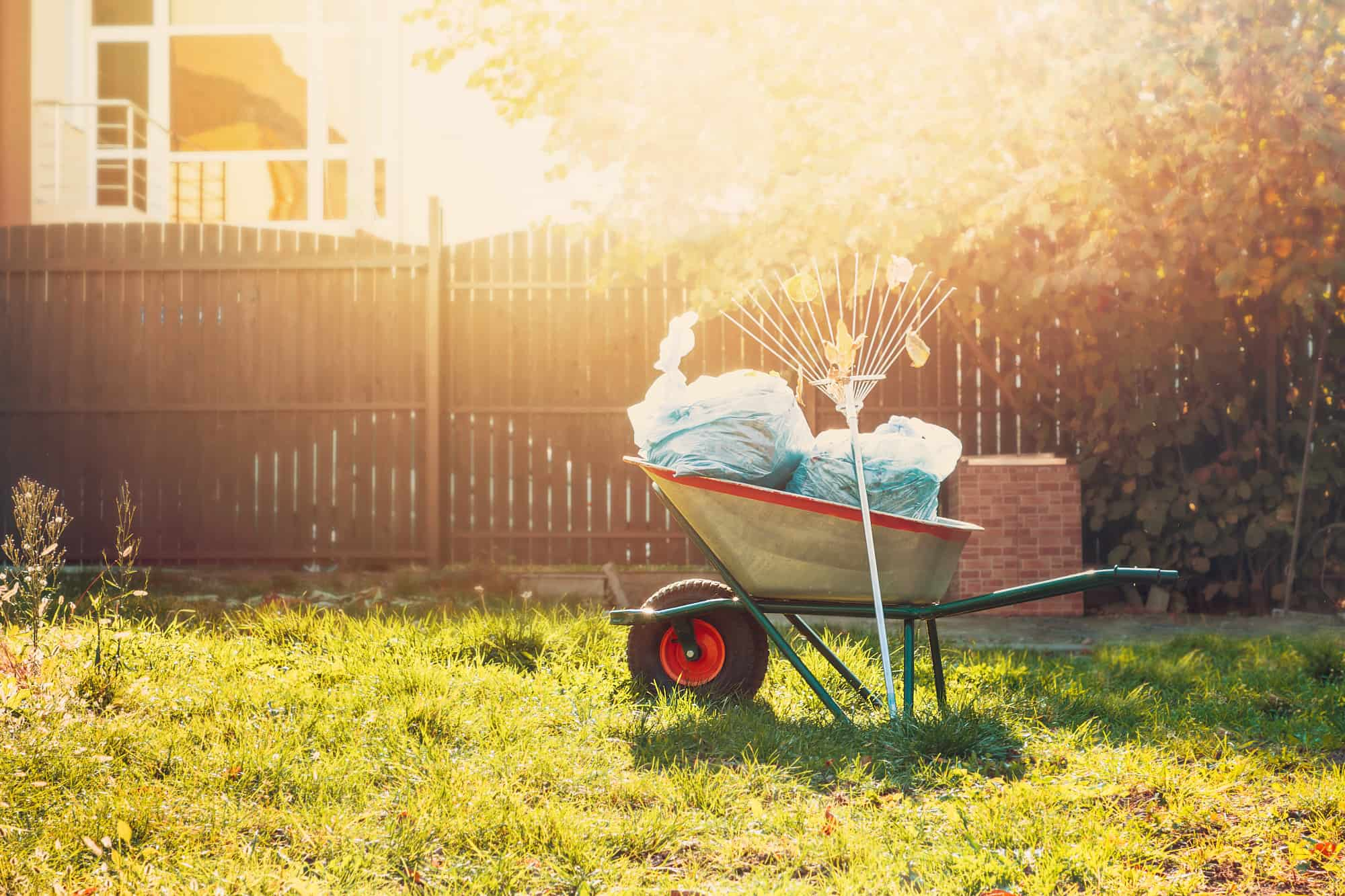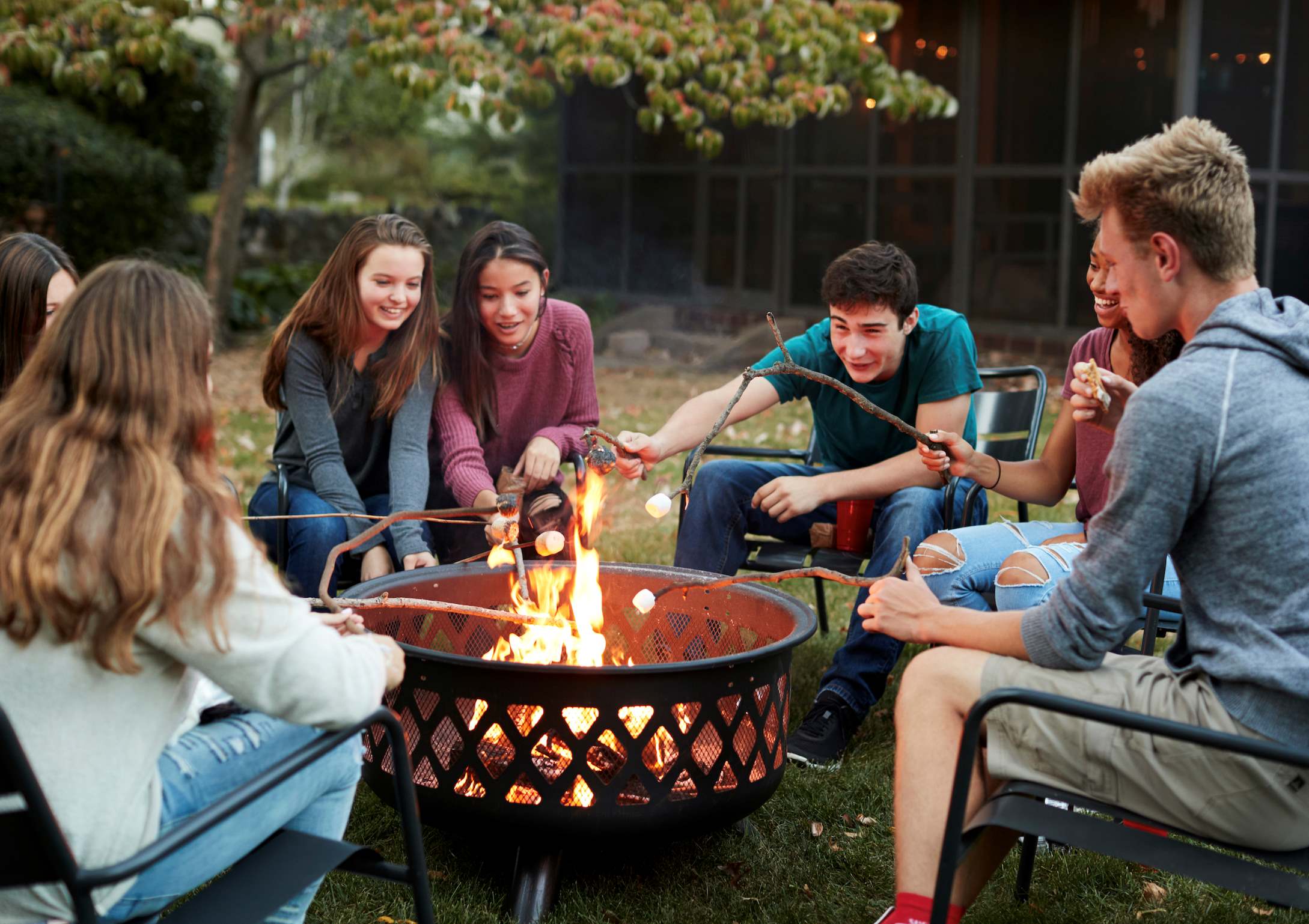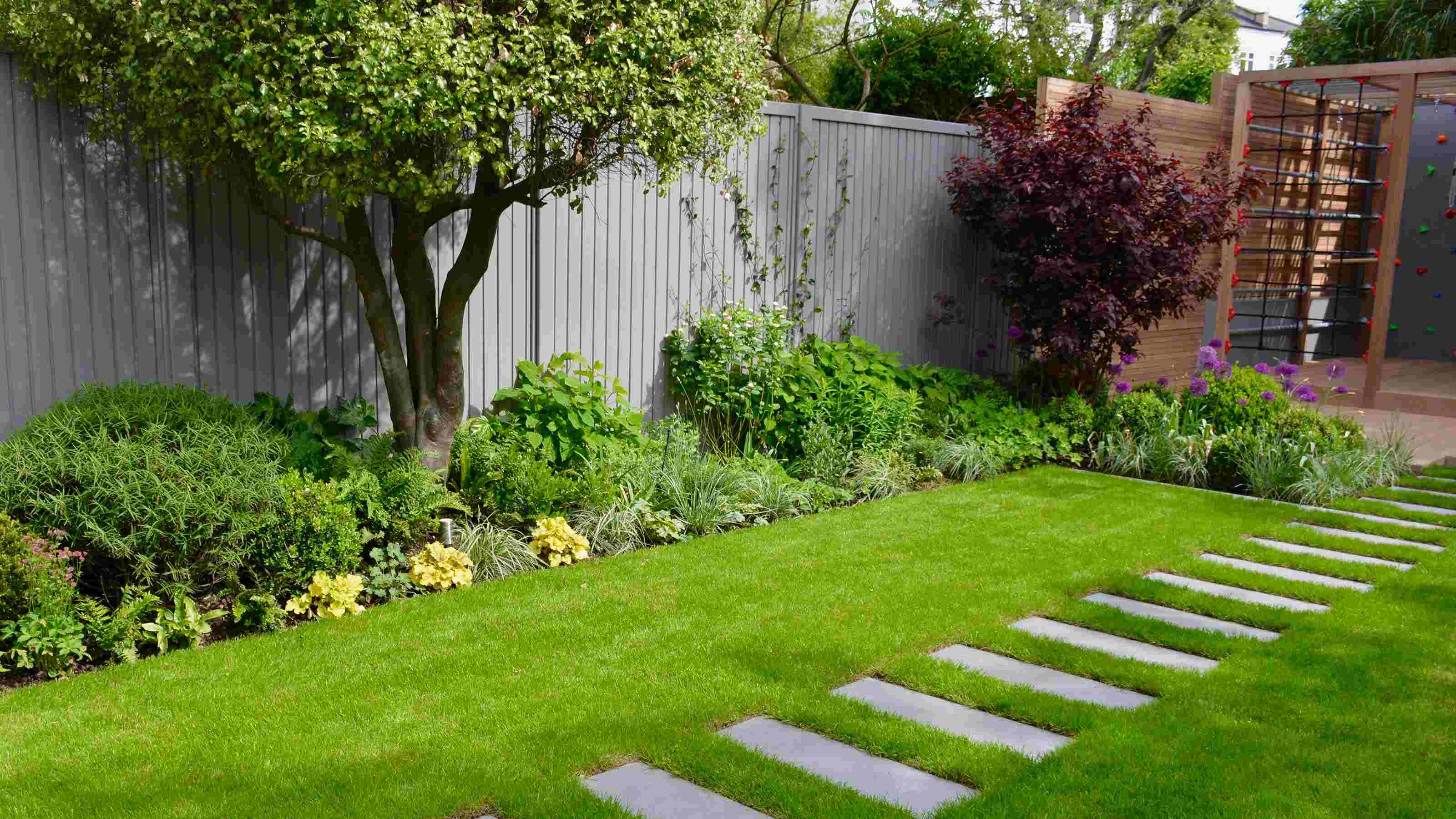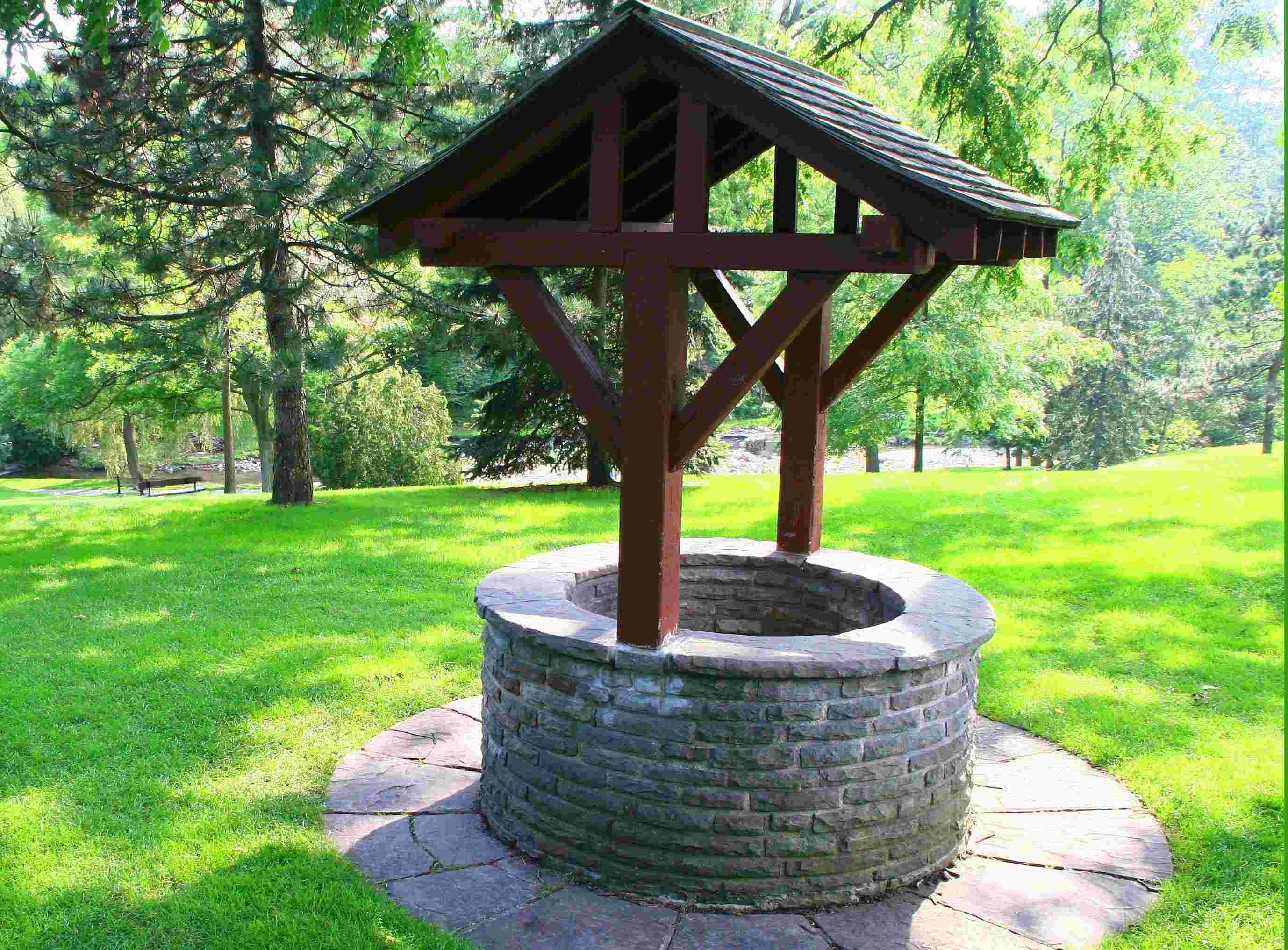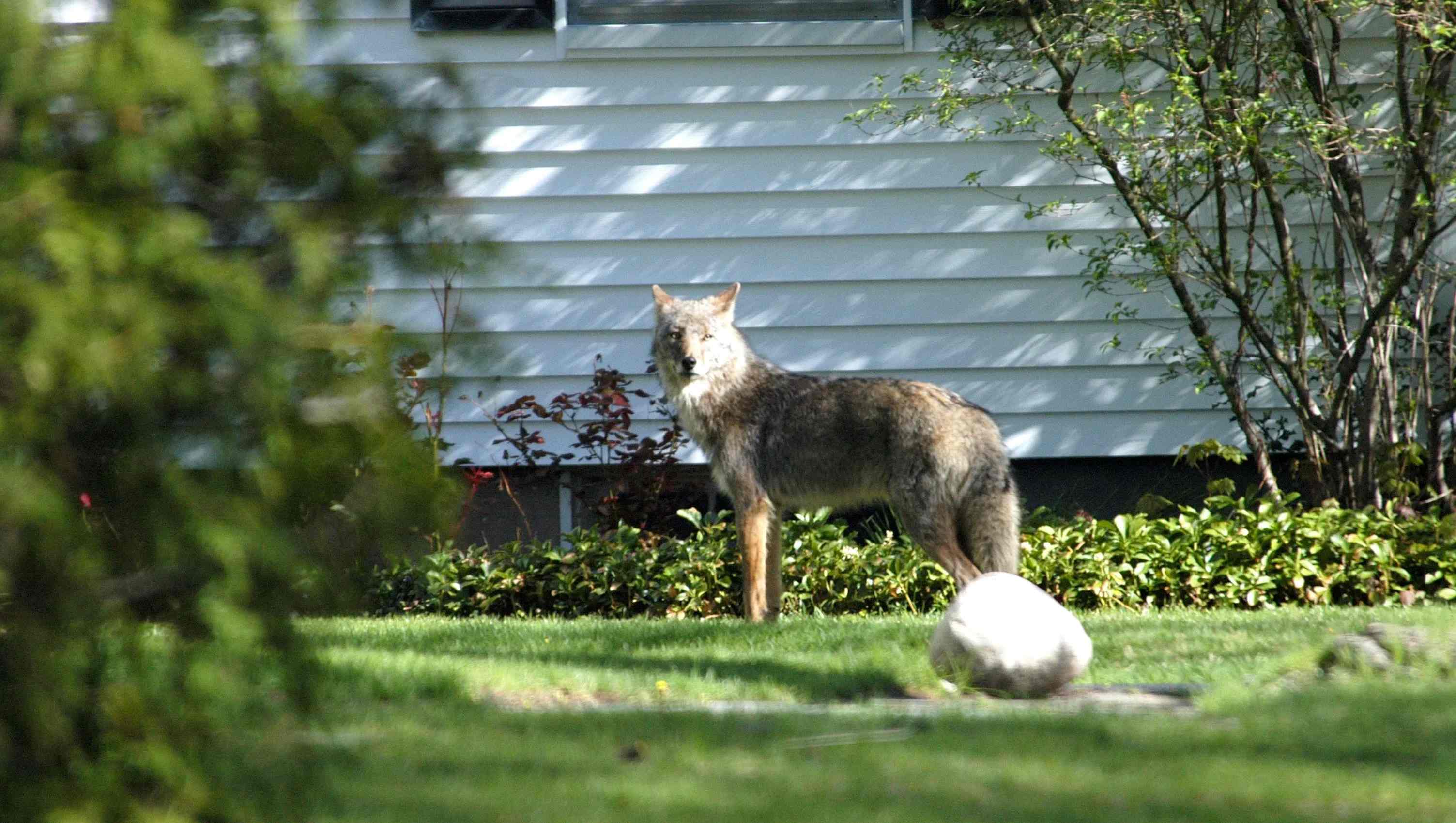Home>Gardening News and Trends>How To Find Crystals In Your Backyard
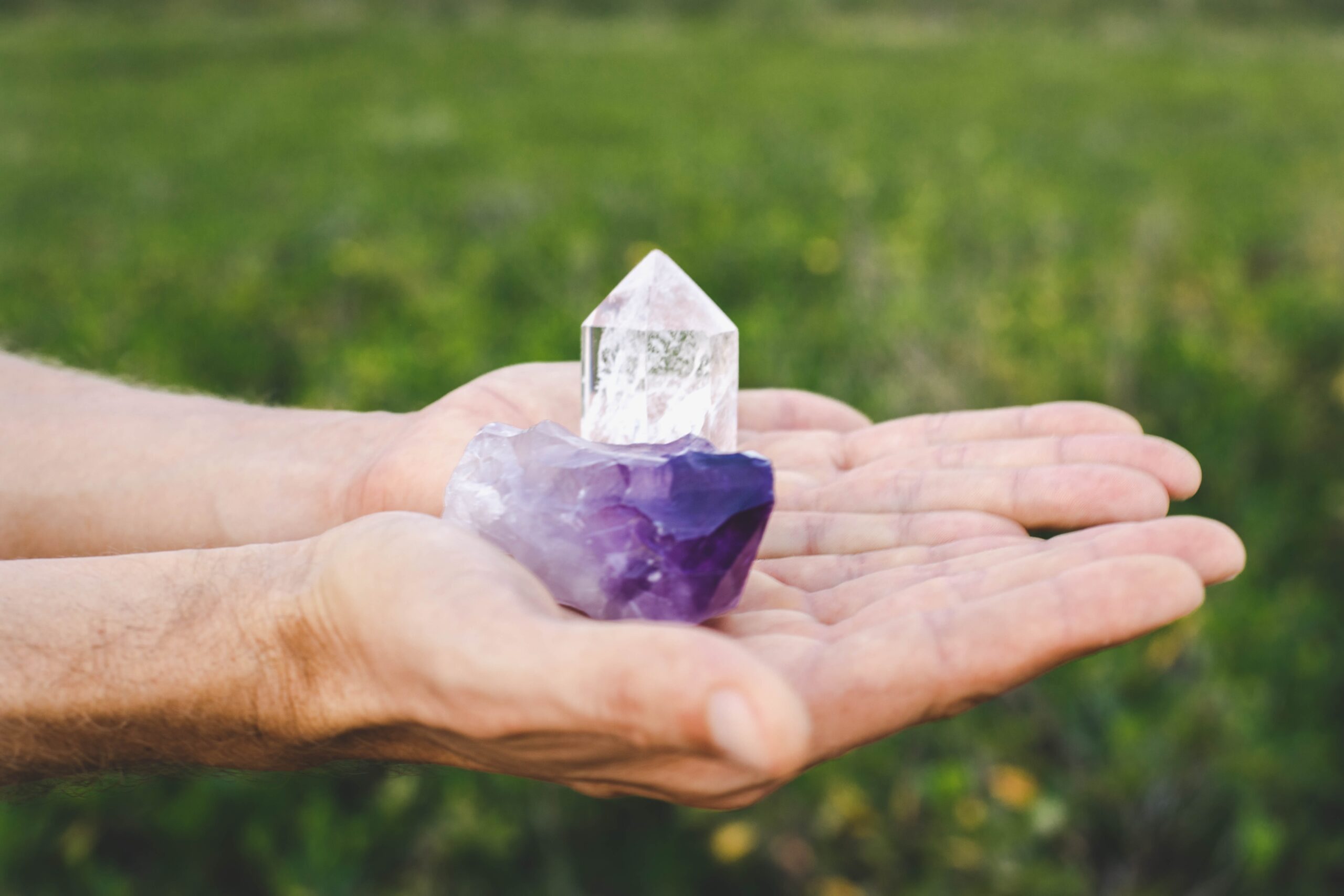

Gardening News and Trends
How To Find Crystals In Your Backyard
Published: August 5, 2023
Discover the latest news on how to find crystals in your backyard with our expert tips and techniques. Unleash your inner explorer and embark on a fascinating journey of unearthing hidden gems right at home.
(Many of the links in this article redirect to a specific reviewed product. Your purchase of these products through affiliate links helps to generate commission for Chicagolandgardening.com, at no extra cost. Learn more)
Table of Contents
Introduction
Welcome to the exciting world of crystal hunting! If you’re looking to embark on a unique and captivating adventure, you might not need to travel far. Believe it or not, your own backyard could be a hidden treasure trove of beautiful crystals just waiting to be discovered. Whether you’re a seasoned crystal enthusiast or a beginner looking to start your collection, this article will guide you on how to find crystals in your very own backyard.
Crystals have long fascinated humanity with their stunning beauty and mystical properties. They come in a wide array of colors, shapes, and sizes, each with its own unique energy and characteristics. From quartz and amethyst to citrine and jasper, crystals have been revered throughout history for their healing properties and spiritual significance.
Exploring your backyard for crystals is not only a fun and educational activity, but it also allows you to connect with nature on a deeper level. It’s like embarking on a mini-treasure hunt, where every discovery brings a sense of wonder and excitement. Plus, finding crystals in your own backyard saves you the hassle of searching far and wide or purchasing them from a store.
So, how can you start your crystal hunting journey in your backyard? This article will walk you through the process, from understanding crystals and identifying potential crystal deposits to collecting, cleaning, and displaying your valuable finds. Before we dive in, grab a pen and paper, as you’ll want to take notes along the way and document your discoveries.
Are you ready to unearth the hidden wonders beneath the soil of your backyard? Let’s dive into the world of crystal hunting and uncover the treasures that await!
Understanding Crystals
Before you begin your crystal hunting adventure, it’s essential to have a basic understanding of what crystals are and how they are formed. Crystals are solid materials made up of repeating patterns of atoms or molecules. These patterns give crystals their specific geometric shapes and unique properties.
Crystals can form in a variety of ways, but one common method is through a process called crystallization. Crystallization occurs when liquid cools or evaporates, causing the atoms or molecules to come together and arrange themselves in a specific pattern. This process can take thousands or even millions of years, resulting in the formation of crystals.
Each type of crystal has its own distinct properties and characteristics. For example, quartz crystals are known for their clarity, durability, and ability to amplify energy. Amethyst crystals, on the other hand, are prized for their calming and protective properties. Further research and study of crystals will help you understand their unique qualities and how they can benefit you.
It’s important to note that not all rocks are crystals. Rocks are made up of minerals, and while some minerals can form crystals, others do not. By familiarizing yourself with the different types of crystals and their properties, you’ll be better equipped to identify and appreciate the crystals you find in your backyard.
Additionally, it’s worth noting that crystals are not only aesthetically pleasing but also believed to possess healing and spiritual properties. Many people use crystals for meditation, energy healing, and balancing their chakras. However, it’s important to remember that crystal healing is not a substitute for professional medical advice, and individual experiences may vary.
Now that you have a basic understanding of crystals and their formation, it’s time to put that knowledge into action and start exploring your backyard for these beautiful treasures. As you embark on this exciting journey, keep an open mind and let your intuition guide you. Who knows what wonders you may uncover beneath the surface?
Exploring Your Backyard
Once you’re armed with knowledge about crystals and their formation, it’s time to venture into your very own backyard in search of these geological wonders. But where should you begin? Here are a few tips to help you explore your backyard effectively:
- Choose the Right Time: Timing is important when hunting for crystals in your backyard. The best time to search is after a heavy rain or when the soil is moist, as this helps to loosen the ground and make it easier to dig.
- Survey the Area: Start by surveying your backyard and identifying potential areas where crystals might be found. Look for exposed rocks, gravel beds, or areas with different soil colors or textures, as these can indicate the presence of mineral deposits.
- Pay Attention to Landmarks: Take note of any specific landmarks or geological features in your backyard, such as hills, slopes, or natural formations. Crystals are often found in areas with unique geological formations.
- Get on Your Hands and Knees: To thoroughly explore your backyard, get down on your hands and knees and closely inspect the ground. Look for small rocks, pebbles, or even tiny crystals on the surface. Sometimes, crystals can be easily spotted if you have a keen eye.
- Use a Trowel or Garden Tool: Once you’ve identified a potential crystal deposit, use a trowel or a garden tool to carefully dig into the soil. Start by removing the top layer of dirt and gradually work your way deeper. Be mindful not to damage any potential crystals in the process.
- Take Your Time: Crystal hunting requires patience and perseverance. Take your time as you explore your backyard, paying attention to any clues or signs that might lead you to a hidden crystal vein. Remember, it’s not just about the end result but also enjoying the journey.
As you explore, keep in mind that not every backyard will yield crystals. It largely depends on the geological composition of the area. But don’t be discouraged if you don’t find any right away. The excitement of the hunt is in the exploration itself, and you never know what other interesting discoveries you might make along the way.
Now that you know how to explore your backyard effectively, it’s time to understand how to identify potential crystal deposits. The next section will guide you through this important step in your crystal hunting journey.
Identifying Potential Crystal Deposits
Identifying potential crystal deposits in your backyard is a crucial step in your crystal hunting journey. While crystals can be found in various geological formations, there are a few key indicators to look out for when searching for these hidden gems:
- Geological Context: Familiarize yourself with the geological context of your local region. Research the types of rocks and minerals that are typically found in your area. This will give you a better understanding of the types of crystals that may be present in your backyard.
- Soil Composition: Different types of crystals require specific soil compositions to form. Sandy or gravelly soils are known to be favorable for crystal growth, as they allow for better drainage and the movement of mineral-rich water through the ground.
- Rocks and Gravel: Look for areas in your backyard that have exposed rocks, gravel beds, or even boulders. Crystals are often found in association with these natural formations, as they provide the necessary substrate for crystal growth.
- Veins and Fissures: Pay attention to any cracks, veins, or fissures in rocks or the ground. These features can indicate the presence of mineral deposits and potential crystal formations. Crystals may have grown within these fractures over time.
- Color and Texture: Keep an eye out for any unique colors or textures in the soil or rocks. Crystals can have distinct colors, and these variations may be visible in the surrounding geology. Unusual shades or patterns can be a sign of crystals waiting to be discovered.
- Prior Geological Activity: Consider the geological history of your region. Areas with past volcanic activity, tectonic movements, or the presence of igneous or metamorphic rocks are more likely to have crystal-rich deposits.
Remember, crystal deposits can be elusive and vary greatly from one location to another. It’s important to approach your backyard crystal hunting with a sense of curiosity and exploration. Be open to unexpected discoveries and enjoy the process of uncovering the hidden beauty of nature.
Next, let’s explore the tools and equipment you’ll need to aid you in your crystal hunting adventure.
Tools and Equipment Needed
To maximize your chances of finding crystals in your backyard, it’s essential to have the right tools and equipment. While you don’t need a full-scale mining operation, a few essential items will greatly assist you in your crystal hunting journey:
- Gardening Gloves: Protect your hands by wearing a pair of sturdy gardening gloves. They will shield your hands from sharp rocks, thorns, and potential hazards as you dig and explore.
- Trowel or Garden Tool: A trowel or garden tool is invaluable for digging and excavating soil. Opt for one with a sharp edge to easily break up the ground and uncover potential crystal deposits.
- Geological Hammer: A geological hammer is a must-have tool for any crystal hunter. It allows you to break open rocks, split them along natural seams, and examine their contents for crystals or mineral formations.
- Brush or Soft Bristle Brush: A brush, such as a soft-bristled paintbrush or toothbrush, is handy for gently cleaning off dirt and debris from crystals without damaging them. It helps reveal the true beauty of your crystal finds.
- Magnifying Glass: A magnifying glass can be useful for examining small details and features of crystals. It helps you spot tiny mineral formations or identify unique characteristics that might be missed by the naked eye.
- Containers or Pouches: As you collect crystals, you’ll need containers or pouches to store and transport them safely. Choose options that are sturdy and provide protection against scratches or damage.
- Field Guide or Crystal Identification Book: Invest in a reliable field guide or crystal identification book to help you identify the crystals you find. These resources often include photographs, descriptions, and information on the properties and characteristics of various crystals.
It’s important to note that safety should always be a priority when using tools and equipment. Be cautious when handling the geological hammer or any sharp objects, and always wear protective gear, such as safety glasses, if necessary.
Additionally, it’s a good idea to familiarize yourself with local laws and regulations regarding rock and mineral collecting. Some areas may have restrictions or permits required for digging or removing specimens from public or private property.
Now that you’re equipped with the necessary tools, it’s time to venture into your backyard and put them to good use as you collect and mine crystals.
Collecting and Mining Crystals
Now comes the exciting part of your crystal hunting journey – collecting and mining crystals in your backyard. With the right techniques and a keen eye, you can uncover beautiful specimens that will enhance your crystal collection. Here’s how to get started:
- Targeted Digging: Once you’ve identified a potential crystal deposit, carefully start excavating the area using your trowel or garden tool. Begin by removing the top layer of soil and gradually work your way deeper, taking breaks to examine the exposed layers for any signs of crystals.
- Inspecting Rocks and Fissures: Pay close attention to rocks and fissures as you dig. Break open any larger rocks using your geological hammer and examine their interiors for crystal formations. Crystals can be found within cavities or along fractures, so keep an eye out for any sparkles or colorful specks.
- Using Water: If you encounter hard-packed soil or rocks, consider using water to help loosen the ground. A gentle spray from a garden hose or a spray bottle can facilitate the extraction process and reveal hidden crystals.
- Sifting and Screening: In some cases, particularly if you’re searching for smaller crystals or crystal fragments, sifting and screening the soil can be effective. Use a mesh screen or sieve with small holes to separate the finer soil from potential crystals.
- Storing and Labeling Specimens: As you collect crystals, carefully place them in your containers or pouches for safekeeping. It’s essential to label each specimen with information such as the date of collection, location, and any observations or notes about the crystal’s appearance.
- Respecting the Environment: Throughout the collection process, it’s crucial to respect the environment and leave it undisturbed as much as possible. Be mindful of any plants or wildlife in the area and avoid causing unnecessary damage to the ecosystem.
Remember, every crystal you collect tells a story about the geological processes and history of your backyard. Each specimen is unique and holds its own beauty and energy. Take the time to appreciate and marvel at the wonders you’ve unearthed.
Once you’ve finished collecting crystals, it’s time to move on to the next step – cleaning and preparing your treasures for display.
Cleaning and Preparing Crystals
After collecting and mining crystals from your backyard, it’s important to clean and prepare them properly before displaying or using them. Cleaning not only enhances the appearance of your crystals but also helps remove any dirt, debris, or residue that may obscure their natural beauty. Here are some steps to follow:
- Rinse with Water: Start by gently rinsing your crystals with water. Use a soft stream of water or submerge them in a container of clean water, making sure to remove any dirt or loose particles. Avoid using hot water or harsh chemicals, as this may damage certain crystals.
- Brushing: For crystals with stubborn dirt or encrusted areas, use a soft-bristled brush or toothbrush to gently scrub them. Be careful not to apply too much pressure, as some crystals are more delicate and can be scratched or damaged.
- Soaking: If your crystals have mineral deposits or hard-to-remove stains, soaking them in a mild, non-abrasive cleaning solution can help. Make a solution by mixing warm water with a small amount of mild dish soap or gentle crystal cleanser. Let your crystals soak for a few minutes to loosen any dirt or stains, then rinse them thoroughly.
- Drying: After cleaning, place your crystals on a soft cloth or towel to air dry. Avoid exposing them to direct sunlight or high heat, as this can cause discoloration or damage.
- Polishing: If you desire a shiny and polished look, you can use a soft cloth or chamois to gently buff your crystals. This will enhance their natural luster and bring out their beauty. However, not all crystals can or should be polished, so research each crystal type before attempting this step.
- Energizing or Charging: Some people believe that crystals can absorb and retain energy, so it may be beneficial to energetically cleanse or charge your crystals. This can be done through methods such as moonlight or sunlight exposure, smudging with sage or palo santo, or using other energy-clearing techniques.
Remember to handle your crystals with care during the cleaning process, as they can be fragile and prone to breakage. Be patient and gentle, allowing your crystals to slowly regain their brilliance.
Once your crystals are clean and prepared, it’s time to think about how you would like to store and display them to showcase their natural beauty.
Storing and Displaying Crystals
Now that you have cleaned and prepared your crystals, it’s important to store and display them in a way that showcases their beauty while keeping them safe. Here are some tips for storing and displaying your precious crystal finds:
- Storage Containers: Invest in storage containers that provide protection against dust, moisture, and potential damage. Clear plastic containers with tight-fitting lids or individual pouches are ideal for small to medium-sized crystals, ensuring each specimen is kept separate and secure.
- Labeling: Label each container or pouch with the name of the crystal, the date of collection, and any other relevant information. This will help you track and identify your crystals, especially if you have a growing collection.
- Organize by Size and Type: Arrange your crystals in a way that makes them easily accessible and visually appealing. Consider organizing them by size, shape, or type of crystal to create a cohesive and aesthetically pleasing display.
- Display Cases: If you have larger or more valuable crystals, consider using display cases or glass cabinets to showcase them. Display cases protect your crystals while allowing you to appreciate their beauty without the risk of accidental damage or handling.
- Natural Elements: Incorporate natural elements such as rocks, driftwood, or plants into your display to create a visually appealing and harmonious arrangement. These elements can complement the beauty of your crystals and add an organic touch.
- Lighting: Proper lighting can enhance the visual impact of your crystal display. Use soft, natural lighting or strategically placed spotlights to highlight the unique features and colors of your crystals.
- Rotating Display: Consider periodically rotating your crystals to prevent prolonged exposure to direct sunlight or harsh lighting. This will help maintain their vibrancy and prevent potential fading or discoloration.
Remember to handle your crystals with care when arranging and displaying them, as contact with sharp edges or rough surfaces could damage their delicate structure. Regularly dust and clean your display area to keep your crystals looking their best.
Displaying your crystal collection not only allows you to admire their beauty but also serves as a reminder of your crystal hunting adventures and the unique energy they bring to your space.
With your crystals safely stored and displayed, you have completed the journey of finding, cleaning, and showcasing the treasures from your own backyard. Enjoy the beauty and positive energy that these remarkable geological wonders bring into your life!
Safety Considerations
While crystal hunting can be an exciting and rewarding activity, it’s important to prioritize safety throughout the process. Here are some safety considerations to keep in mind:
- Protective Gear: Always wear appropriate protective gear, such as gardening gloves and safety glasses, to safeguard your hands and eyes from potential hazards like sharp rocks or flying debris.
- Safe Digging: Use caution when digging and excavating soil, especially if you encounter hard-packed or rocky areas. Take care not to strain your back or overexert yourself while digging.
- Land Access: Ensure you have permission to search for crystals in your backyard, especially if you are on private property. Respect any posted signs or restrictions in public areas.
- Bug and Wildlife Awareness: Be aware of your surroundings and watch out for insects, spiders, or other potentially harmful creatures that might be present in your backyard. Avoid disturbing animal habitats and be respectful of their natural environment.
- Chemical Hazards: Avoid using harsh chemicals for cleaning crystals, as they can be harmful to both you and the environment. Stick to mild, non-abrasive cleaning solutions and handle them with care.
- Supervision for Children: If you’re including children in your crystal hunting adventure, ensure they are properly supervised at all times. Teach them about safe and responsible practices, and encourage them to ask for assistance when using tools or equipment.
- Proper Lifting and Carrying Techniques: If you come across large or heavy rocks during your crystal hunting, use proper lifting and carrying techniques to avoid strain or injury. When in doubt, ask for assistance from someone who can safely help you.
- Recognizing Toxic Minerals: Familiarize yourself with toxic minerals that may be present in your area and avoid direct contact or ingestion of any potentially harmful substances. Research the local geology and educate yourself about any hazardous minerals that may be found in your region.
Always prioritize your safety, well-being, and the preservation of the environment when engaging in crystal hunting. If you have any concerns or questions, don’t hesitate to seek guidance from local experts or professional mineralogists.
By following these safety considerations, you can fully enjoy the excitement and adventure of crystal hunting while minimizing any potential risks or hazards.
Conclusion
Embarking on a crystal hunting adventure in your own backyard can be a fascinating and rewarding experience. From the initial exploration to identifying potential crystal deposits, collecting and mining the crystals, and finally cleaning, preparing, and displaying your treasures, each step brings you closer to the magical beauty locked within the Earth.
By understanding the formation of crystals and familiarizing yourself with the geological context of your region, you can increase your chances of uncovering these precious gems. Remember to approach your backyard crystal hunting with curiosity, patience, and respect for the environment.
Equipped with the right tools and equipment, you’ll be ready to dig deep and unearth the hidden wonders beneath the soil. Take the time to clean and prepare your crystals, accentuating their inherent beauty while preserving their unique properties. Then, proudly display your crystal collection, allowing its positive energy to permeate your space.
Throughout your crystal hunting journey, prioritize safety at every step, wearing protective gear, handling tools with care, and being mindful of potential hazards. By taking these precautions, you can ensure your well-being and the preservation of the environment.
So, unleash your inner explorer, and let your backyard become a treasure trove of captivating crystals. Whether you find small quartz points or exquisite amethyst clusters, each discovery is a testament to the remarkable beauty and power of the Earth.
Now, grab your tools, embrace the adventure, and let the pursuit of crystals in your backyard open up a world of wonder and awe!
